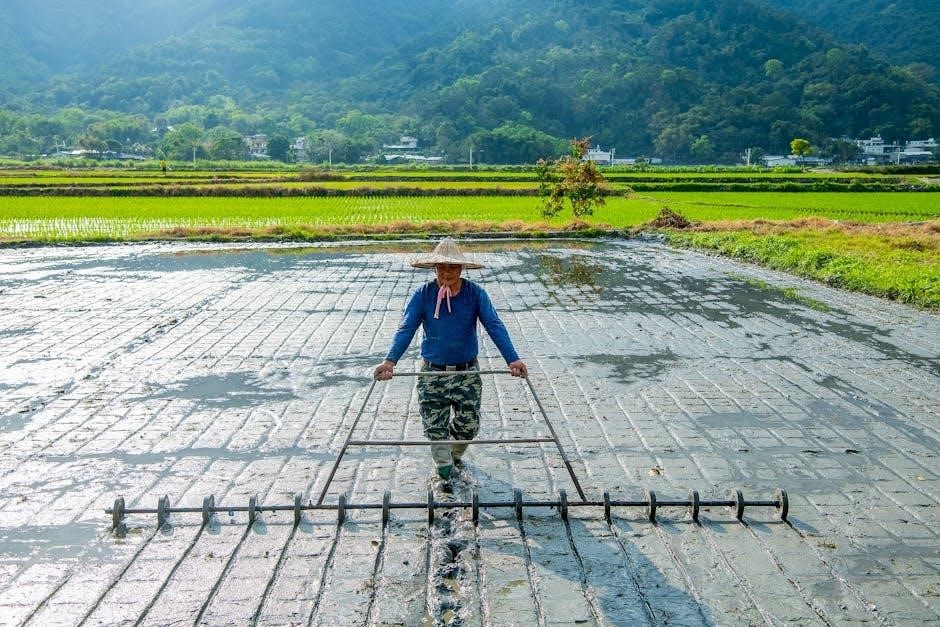Manual irrigation involves simple techniques like using watering cans and buckets to supply water to crops, with low initial costs but significant labor requirements, using locally available materials effectively always․
Definition and Importance
Manual irrigation refers to the process of supplying water to crops using simple, non-mechanical methods, such as watering cans, buckets, and porous pots․ This technique has been used for centuries, particularly in areas where access to electricity and modern irrigation systems is limited․ The importance of manual irrigation lies in its ability to provide a reliable source of water for crops, especially in regions where rainfall is scarce or unpredictable․ Manual irrigation also plays a crucial role in supporting small-scale agriculture, allowing farmers to cultivate crops in areas with limited water resources․ Furthermore, manual irrigation helps to conserve water, reduce soil erosion, and promote sustainable agriculture practices․ Overall, manual irrigation is a vital component of agricultural production, particularly in developing countries where modern irrigation systems are not readily available․ Its importance extends beyond crop production, as it also contributes to food security, rural development, and environmental sustainability․
Techniques and Methods
Manual irrigation techniques involve various methods to distribute water to crops, including the use of watering cans, buckets, and porous pots․ These methods allow for efficient water distribution, reducing evaporation and runoff․ One technique involves using perforated pipes to slowly release water into the soil, minimizing waste and ensuring crops receive adequate moisture․ Another method employs bottles with small holes to trickle water into the soil, promoting healthy root growth․ Additionally, manual irrigation techniques can be combined with mulching and crop rotation to further enhance water retention and soil fertility․ By adopting these methods, farmers can optimize water use, reduce labor costs, and improve crop yields․ Overall, manual irrigation techniques offer a range of effective and sustainable solutions for crop irrigation, particularly in areas with limited access to modern irrigation systems․ These techniques require minimal equipment and can be easily implemented, making them an attractive option for small-scale farmers․
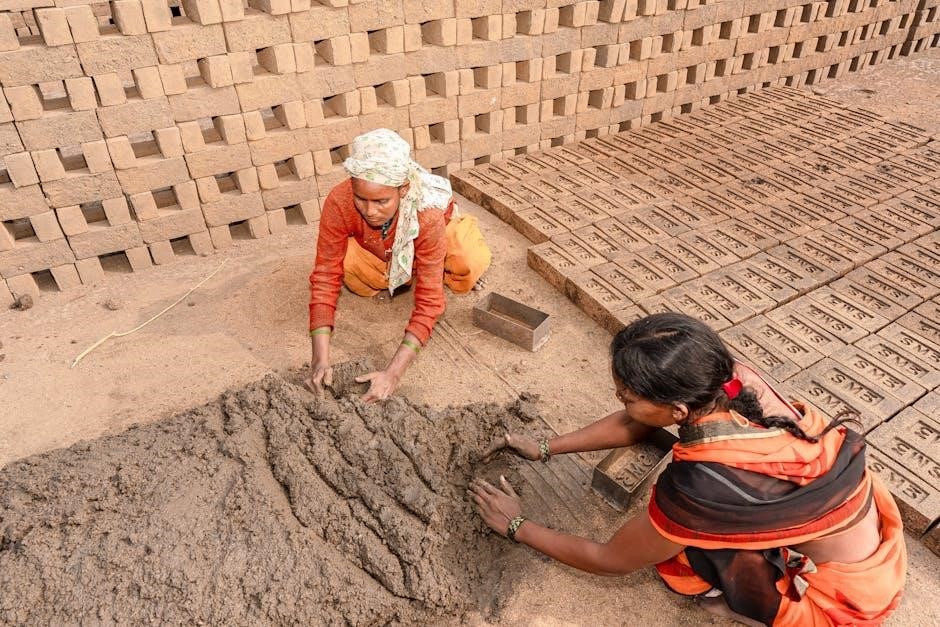
Types of Manual Irrigation Systems
Manual irrigation systems include various types, such as small-scale drip systems, using buckets and watering cans effectively always with minimal equipment and labor requirements every day․
Watering Cans and Buckets
Watering cans and buckets are simple and effective tools for manual irrigation, allowing farmers to supply water to crops in a targeted and efficient manner․ These tools are often used in peri-urban agriculture and are particularly useful for small-scale farming operations․ Watering cans, for example, can be filled with water and then poured directly onto the soil, minimizing waste and ensuring that plants receive the right amount of moisture․ Buckets, on the other hand, can be used to carry larger quantities of water, making them ideal for irrigating larger areas․ By using watering cans and buckets, farmers can reduce their reliance on more complex and expensive irrigation systems, making manual irrigation a viable option for many agricultural applications․ Overall, these tools play a crucial role in supporting manual irrigation efforts and helping farmers to cultivate healthy and productive crops․
Traditional Irrigation Methods
Traditional irrigation methods have been used for centuries, with farmers relying on simple yet effective techniques to water their crops․ One such method involves pulling water out of wells and canals by hand, which is then used to irrigate the land; This labor-intensive approach is still widely used in many parts of the world, particularly in rural areas where access to more modern irrigation systems is limited․ Traditional irrigation methods also include the use of furrows and terracing, which help to control the flow of water and prevent erosion․ These methods are often passed down from generation to generation, with farmers adapting them to suit their specific needs and environments․ By using traditional irrigation methods, farmers can maintain a strong connection to their land and cultural heritage, while also promoting sustainable and environmentally friendly farming practices․ This approach to irrigation is an important part of many agricultural traditions․
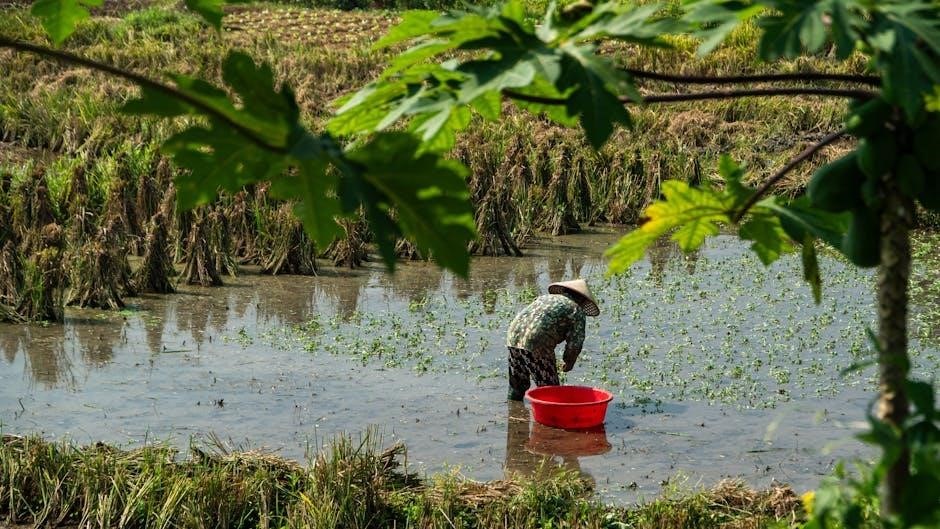
Modern Irrigation Techniques
Modern techniques involve advanced systems and technologies, including sensors and automation, to optimize water usage and crop yields, using data and expertise effectively always and efficiently every time․
Integration of IoT and AI
The integration of Internet of Things (IoT) and Artificial Intelligence (AI) in irrigation systems is a significant development, enabling real-time monitoring and optimization of water usage․ This technology allows for the automation of irrigation schedules, taking into account factors such as soil moisture, weather forecasts, and crop water requirements․ By leveraging IoT sensors and AI algorithms, farmers can reduce water waste, improve crop yields, and minimize the environmental impact of irrigation․ The use of IoT and AI in irrigation systems also enables remote monitoring and control, allowing farmers to make data-driven decisions and respond quickly to changes in weather or soil conditions․ Overall, the integration of IoT and AI in irrigation systems has the potential to revolutionize the way we manage water resources, making irrigation more efficient, effective, and sustainable․ This technology is being increasingly adopted in various parts of the world, including Africa and other regions․
Optimization of Resources
Optimizing resources is crucial in manual irrigation, where water and labor are scarce․ By using techniques such as mulching and crop rotation, farmers can reduce water loss and improve soil fertility․ Additionally, implementing efficient irrigation schedules and monitoring soil moisture levels can help minimize water waste․ The use of locally available materials, such as buckets and watering cans, can also reduce costs and environmental impact․ Furthermore, optimizing resource allocation can lead to increased crop yields and improved livelihoods for farmers․ Effective resource management is essential for sustainable agriculture, and manual irrigation can play a vital role in achieving this goal․ By adopting resource-efficient practices, farmers can contribute to a more sustainable food system, while also improving their own economic and social well-being, and this is very important for the future of agriculture and the environment․ This approach can be applied in various contexts, including small-scale farming․
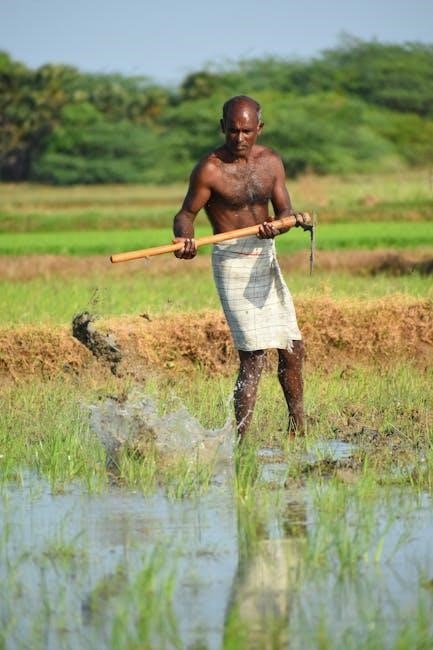
Comparison of Irrigation Methods
Comparing irrigation methods helps farmers choose efficient techniques, using resources effectively always and optimizing water usage properly every time with different available methods considered․
Modern vs Traditional Methods
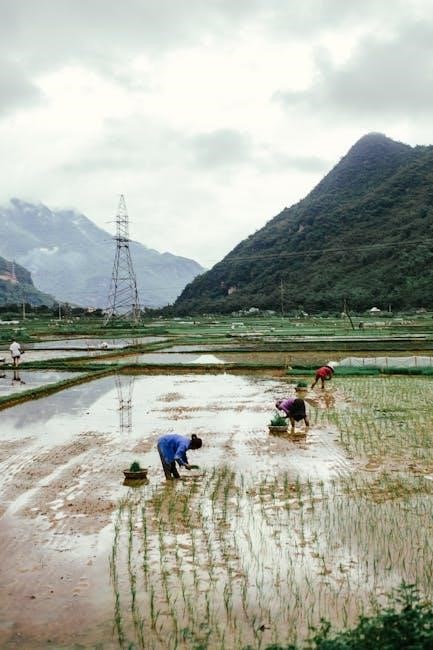
Modern irrigation methods have gained popularity due to their efficiency and water-saving capabilities, as seen in the use of sprinkler and drip irrigation systems․ These methods have been compared to traditional methods, where water is pulled out by farmers from wells and canals to irrigate the land․ The modern methods have been found to be more effective in optimizing water usage and increasing crop yields․ In contrast, traditional methods are often labor-intensive and may result in water loss․ However, traditional methods are still widely used in many parts of the world, particularly in areas where access to modern technology is limited․ The choice between modern and traditional methods depends on various factors, including the availability of resources, climate, and crop type․ By understanding the advantages and disadvantages of each method, farmers can make informed decisions about which approach to use․ This comparison is essential for sustainable agriculture practices․
Low-Tech Techniques
Low-tech techniques have been used for centuries to control the flow of rainwater, such as digging furrows or terracing hillsides; These methods are still widely used in many parts of the world, particularly in areas where access to modern technology is limited․ They depend on the natural rainfall and are often simple and effective․ Low-tech techniques can be used in conjunction with manual irrigation methods, such as using watering cans or buckets, to provide crops with the necessary water․ These techniques are often preferred by small-scale farmers or in areas where water is scarce․ They can be used to irrigate a variety of crops, including vegetables, fruits, and grains․ By using low-tech techniques, farmers can reduce their reliance on modern technology and decrease their water usage․ This approach can help to promote sustainable agriculture practices and conserve water resources․ Low-tech techniques are an important part of manual irrigation systems․

